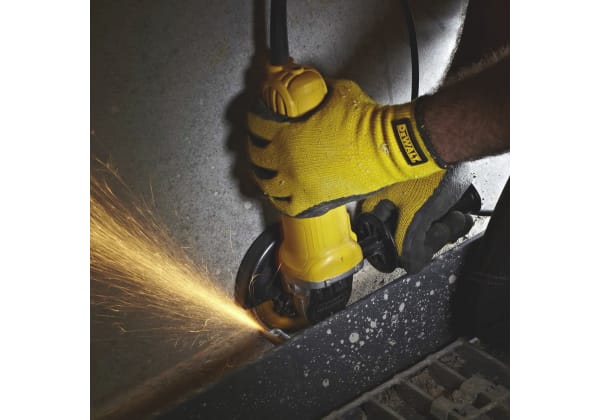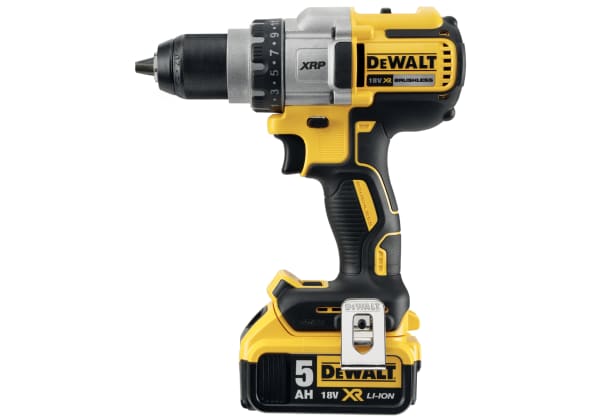- Published 28 May 2024
- Last Modified 16 Oct 2024
- 7 min
A Guide to Impact Drivers
Impact drivers can seem similar to drills and impact wrenches, but each has their benefits and uses. Learn here about what impact drivers are and their uses.

Reviewed by David Carmichael, Solution Engineer (May 2024)
Just what is an impact driver, and what is it for?
Impact drivers are compact tools that are great for low-torque tasks in the contracting and construction industries, especially fastening work in tight spaces. They grip fastener heads more securely than drills do, resulting in fewer stripped heads, and their high speeds allow quick, efficient work. Their internal mechanism produces a smoother, more comfortable experience for the operator than with drills, and their small size and weight further enhance their usability.
Impact tools function using a small electric motor that drives a rotational hammer-and-anvil mechanism. Many times per second, the hammer strikes the anvil forward (making the distinctive rapid hammering sound) and the anvil slightly bounces back. This produces a smoother, more controlled screwdriving effect than seen in drills, where the electric motor directly drives the bit.
Impact drivers can be easily confused for impact wrenches, which are higher-torque power tools using the same type of mechanism. This guide will outline impact drivers’ unique features, applications, and advantages.
Impact Drivers vs. Impact Wrenches
So, specifically, what are impact drivers and how do they differ from impact wrenches? In the simplest terms, impact drivers are power tools meant to replace a screwdriver, and impact wrenches are for replacing a wrench or spanner. Impact drivers are great for industrial assembly tasks that have many screws to install, like woodworking, flooring, roofing, or fencing. These tools particularly excel at driving longer fasteners, such as 7cm screws. You can also use an impact driver for drilling provided you use the right type of bits and ensure the tool can handle the drilled material.
Turn to impact wrenches when you’re working with hex nuts and bolts in heavier-duty applications, like automotive or industrial cases. Impact driver torque is insufficient for that work, so always select the right power tool for the job.
Impact driver vs. impact wrench technical differences generally come down to their drive, speed, and torque.
Drive Size
Impact drivers are easy to spot by their drive type. They use a 1/4-inch hex collet, which is meant for accepting bits with 1/4-inch hex-shank bits. For this reason, impact drivers cannot handle standard cylindrical drill bits.
Impact driver bits connect to screws of any type of head: slotted, square, Phillips, and others. If you’re using an impact driver for drilling, you’ll need special hex-shank drill bits, and they’ll need an impact rating to prevent breaking.
Impact wrenches, on the other hand, use square drives meant for sockets, which in turn drive bolt heads or nuts. The drive size is usually 1/2-inch, but impact wrenches with other sizes are available too.
Adapters exist for converting impact drivers into effective impact wrenches and vice versa, but this usually isn’t the best choice since the tools’ speed and torque differences would remain; each could still be unsuited for the other’s applications.
Tool Speed
Impact drivers are generally higher-speed tools than impact wrenches. Speed refers to how fast the bit spins in rpm. Impact drivers come in speeds of 2500 to 3500 rpm while impact wrenches tend to max out at 2500 rpm. Some tools of each type fall outside these ranges, though, to serve even more applications.
Their speed range makes impact drivers good choices for fasteners with long lengths or projects that have many small, low-torque fasteners. A higher speed rating means you can do this work more quickly, all while staying in control with a comfortable, lightweight tool.
Output Torque
The higher speed ratings of impact drivers come at the cost of torque (rotational force). Typically, impact driver torque ratings range from 50 to 350 Nm, but impact wrenches can handle well past 1,600 Nm. These ratings are both well suited for their tools’ applications, though, since the fasteners' impact drivers handle are usually small and low-torque — and using a higher-torque tool on those fasteners could lead to stripped threads.
Note that impact tools often have separate fastening and releasing torque ratings. Loosening stubborn fasteners takes more torque due to the friction to overcome, and these tools are built for that.
Impact Tool Applications
With impact drivers, impact wrenches, and drills looking so similar it can be tempting to use one in place of the others. This risks damaging the tool, bit, or workpiece, and can also be a safety hazard.
To make sure you do the job right and without harm, understand which applications are best for impact drivers and which ones require other tools.
When to Use Impact Drivers
Contractors and construction workers who deal with joining materials together come across many examples of when to use an impact driver. These tasks often have small, numerous, low-torque fasteners and the work is better suited for lightweight tools (which impact drivers are, compared to impact wrenches). Impact drivers are also great for joining thick materials since they can quickly drive long screws into them without needing pilot holes drilled first.
Some of these impact driver uses include:
- Roofing and flooring, provided the materials are suited for impact driver bits and torque
- Building cabinets and shelving
- Woodworking, such as building backyard patios or fences
- Installing lighting or plumbing fixtures
- Driving screws into drywall
Remember that if you plan to use an impact driver for drilling, such as in woodworking, you’ll need impact-rated hex-shank drill bits. Also keep in mind that the higher, hammering torques of impact drivers make them better suited for drilling larger holes in harder materials like metal or wood.
When Not to Use Impact Drivers
How about when not to use an impact driver? Let’s go through some cases where an impact wrench or a dedicated drill would be more suitable.
- Impact driver vs. impact wrench: Most heavy-duty machinery goes together with hex nuts, bolts, and socket head cap screws. These can be incompatible with impact driver bits, and their required torque is often beyond those tools’ ranges. If you’re working in industrial or automotive settings, impact wrenches will be your power tool of choice
- Impact driver vs. drill: Don’t use your impact driver for drilling if you don’t have the right bits or if the material is too soft. Not all hex-shank bits are impact-rated, and impact drivers can make bits lacking that rating shatter. Also, consider the drilled material. A standard drill is a better choice if the holes are small or the material is soft, as in drywall or softer woods. Additionally, use a drill for very small or short fasteners, since an impact driver may damage them
Impact Driver Options
When selecting an impact driver, consider the following options:
- Maximum fastening and releasing torques in Newton-metres (Nm) indicate how much rotational force the tool can deliver
- Speed in revolutions per minute (rpm), which directly determines how fast screws can go into their threads, and thus your rate of work with this tool
- Battery capacity in amp-hours (Ah)
- Impact rate in beats per minute (bpm), which is how fast the tool will deliver rotational impacts
- Weight in kilograms (kg), which isn’t indicative of performance, but rather how comfortable the tool will be to use
We also stock impact screwdrivers, which are smaller-scale impact drivers that take the form of standard screwdrivers. These are not power tools, rather, they’re meant to be hit with a hammer to trigger a spring-loaded impact drive effect. This gives you more torque for less physical effort, letting you easily loosen small, stuck screws.
Browse RS today to find the impact driver configuration best suited for your work, and the best driver bits for your tasks.



